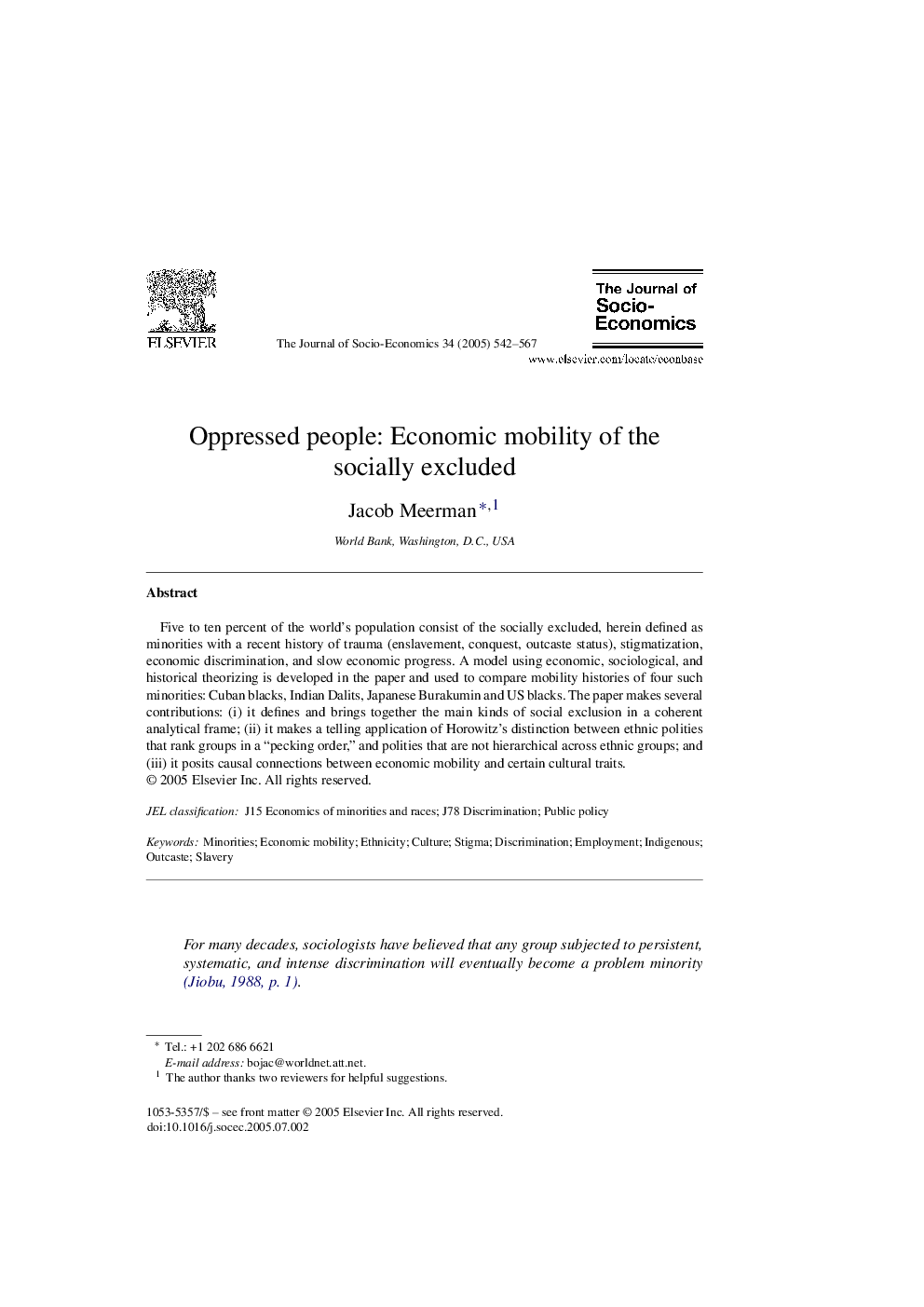| Article ID | Journal | Published Year | Pages | File Type |
|---|---|---|---|---|
| 9727053 | The Journal of Socio-Economics | 2005 | 26 Pages |
Abstract
Five to ten percent of the world's population consist of the socially excluded, herein defined as minorities with a recent history of trauma (enslavement, conquest, outcaste status), stigmatization, economic discrimination, and slow economic progress. A model using economic, sociological, and historical theorizing is developed in the paper and used to compare mobility histories of four such minorities: Cuban blacks, Indian Dalits, Japanese Burakumin and US blacks. The paper makes several contributions: (i) it defines and brings together the main kinds of social exclusion in a coherent analytical frame; (ii) it makes a telling application of Horowitz's distinction between ethnic polities that rank groups in a “pecking order,” and polities that are not hierarchical across ethnic groups; and (iii) it posits causal connections between economic mobility and certain cultural traits.
Keywords
Related Topics
Social Sciences and Humanities
Economics, Econometrics and Finance
Economics and Econometrics
Authors
Jacob Meerman,
